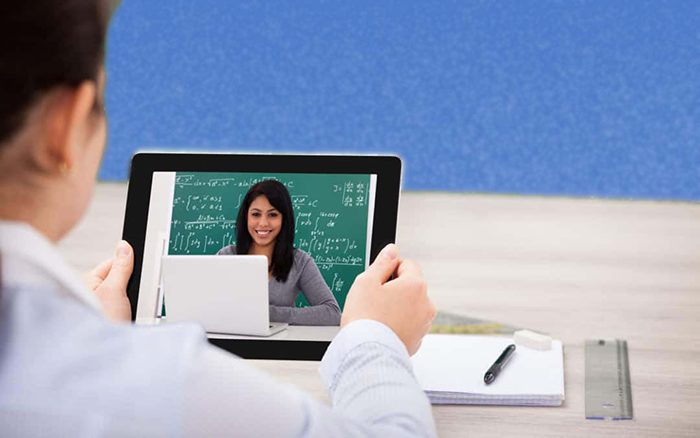
by TutorUp | Oct 28, 2023 | Parents and Home
How Parents Can Help
The disruptions brought about by the global pandemic have led to significant learning loss for many students, emphasizing the importance of proactive and targeted efforts to support their educational recovery. As a parent, you play a pivotal role in helping your child rebuild their academic foundation and regain confidence in their learning abilities. Here are some practical strategies to assist your child in recovering from learning loss.
- Identify Specific Areas of Concern: Begin by identifying the specific areas in which your child may be struggling. Assess their recent report cards, speak with their teachers, and consider seeking a professional assessment if needed. Understanding the specific challenges your child faces will allow you to tailor your support more effectively.
- Establish Open Communication: Create a supportive and open communication channel with your child. Discuss their feelings about returning to school and any challenges they may be experiencing. Encourage them to express their concerns and frustrations, and assure them that you are there to provide support and guidance.
- Implement a Consistent Routine: Consistency is key when helping your child recover from learning loss. Establish a daily routine that includes dedicated time for homework, study sessions, and leisure activities. Consistent routines provide a sense of stability and predictability, helping your child feel more in control of their academic responsibilities.
- Utilize Educational Resources: Leverage educational resources, both online and offline, to supplement your child’s learning. Educational apps, websites, and books tailored to their grade level and areas of struggle can provide additional practice and reinforcement. Many platforms offer interactive and engaging content that makes learning enjoyable.
- Encourage Active Learning: Move away from passive learning and encourage active engagement. Incorporate hands-on activities, experiments, and real-world applications of concepts to make learning more tangible and interesting. Active learning not only reinforces academic concepts but also enhances critical thinking skills.
- Set Realistic Goals: Work with your child to set realistic and achievable academic goals. Break down larger goals into smaller, manageable tasks, celebrating small victories along the way. This not only helps build momentum but also fosters a sense of accomplishment.
- Provide Positive Reinforcement: Offer positive reinforcement and praise for your child’s efforts and progress. Focusing on their strengths and acknowledging the steps they are taking to overcome learning challenges boosts their confidence and motivation. Celebrate both academic achievements and personal growth.
- Consider Professional Support: If your child’s learning loss is substantial, consider enlisting the help of a professional tutor or educator. A qualified tutor can provide targeted support, addressing specific learning gaps and tailoring their approach to your child’s individual needs. This personalized attention can accelerate the recovery process.
- Promote a Growth Mindset: Encourage a growth mindset by emphasizing the idea that intelligence and abilities can be developed through effort and perseverance. Teach your child that setbacks are a natural part of the learning process and an opportunity for growth. This mindset shift can positively impact their approach to challenges.
- Stay Engaged with Teachers: Maintain regular communication with your child’s teachers to stay informed about their progress and any additional support they may need. Collaborate with teachers to create a cohesive plan for your child’s recovery, ensuring that everyone is working together to support their educational journey.
Recovering from learning loss requires a concerted effort from both parents and educators. By identifying specific challenges, establishing open communication, and implementing targeted strategies, you can help your child rebuild their academic foundation and rediscover a love for learning.

by TutorUp | Jan 15, 2021 | Online Tutoring
Parents and educators agree that the COVID learning loss issue is real. A new report from ABC News states that “As millions of students return to virtual classrooms after the holidays, new research reveals how the coronavirus pandemic has disrupted learning and skills retention nationwide that experts say could take years to overcome.” Students are experiencing gaps in understanding, skills, and knowledge that will have far reaching impacts on their academic progress.
Margaret Raymond, director of the Center for Research on Education Outcomes at Stanford University said, “We found that the learning loss experience was quite pervasive, that almost all students were negatively impacted by the pandemic and pivot to remote learning,” The Stanford researchers estimate that students have already lost half a year in reading and more than a full year in math learning since the pandemic began.
Sixty-six percent of teachers in one national survey, conducted by the RAND Corporation in conjunction with the Bill and Melinda Gates Foundation, said their students are less prepared for grade-level work now compared to this point last year.
One-on-One Online Tutoring Helps Students Get Ahead
With kids spending a lot of time online for school, it may seem counterintuitive to suggest that they would benefit from online tutoring. The evidence, however, shows that virtual tutoring may produce the same benefits as in-person tutoring. Scientific American reports that studies show students making impressive gains after online tutoring. Author Philip Oreopoulos, Distinguished Professor in Economics of Education Policy at the University of Toronto, recently analyzed 96 randomized evaluations of different tutoring models with a group of his colleagues. They found that “80 percent of the studies led to markedly improved outcomes, with more than half of the studies reporting large gains as a result of these programs.”
To minimize the risk of face-to-face interaction during a pandemic, online tutoring programs are gaining in popularity and are proving to be highly effective. An evaluation of one online tutoring program in Italy showed that “middle school students who received three hours of online tutoring a week—over a computer, tablet or smartphone—from trained university students saw a 4.7 percent boost in performance in math, English and Italian. With six hours of tutoring support, improvement doubled.”
One of the reasons that online school is so stressful for students is because they get very little individual help and tend to be reluctant or embarrassed to ask questions in the online group setting. Older students are getting inundated with homework assignments they are expected to complete independently, and younger students are having problems staying engaged in group settings. When one teacher/tutor works with one student at a time, this problem is eliminated, and students get the personalized, direct help they need.
An experienced teacher can conduct the same high quality personalized tutoring sessions in a virtual format that they can when meeting in person. As student and teacher get to know each other and build rapport, the teacher is able to customize the learning experience to suit that student’s needs and learning style.
Find out more about TutorUp’s online tutoring services, where all of our tutors are certified, experienced, background-checked teachers who know how to teach.

by TutorUp | Dec 21, 2020 | Online Tutoring, Parents and Home
There are basically four main learning styles for children (and adults): Visual, Auditory, Tactile, and Kinesthetic. Most children fall into a combination of styles, but you can usually identify one style that seems to be the most successful.
Four Basic Learning Styles
- Visual Learners learn through seeing. Showing works better than explaining.
- Auditory Learners learn through listening. Explaining and discussing things is the best way to reach them.
- Tactile Learners learn through touch. Being able to use their hands, reading, writing, and even doodling or drawing, helps them learn.
- Kinesthetic Learners need to move and do. The kinesthetic learner may have trouble sitting still and needs to be able to be active in order to stay engaged.
No surprise that experts don’t all agree, and many of them break down these four basic learning styles into more specific niches. The important thing is to be able to recognize what works for your child, and use that knowledge to help them succeed.
Practical Application in the Classroom
Now imagine that you have a classroom of twenty students, and they all have slightly different learning styles that work for them. And they are all at different levels of comprehension and mastery of a specific subject or concept. It is clearly a huge challenge to try to meet those individual needs and ensure that everyone in the class is “getting it”.
If you are the parent of a student who may be struggling to keep up, or just needs a little extra one-on-one attention to achieve mastery of a subject, private tutoring is an effective option. Even the most accomplished students benefit from having the teacher’s undivided attention to ask questions and get answers.
Pandemic Learning Loss
This is even more true over the past year where we have seen students who normally don’t have a problem in school who are now falling behind. It may be directly related to the switch to online learning, part-time school, and the inherent inadequacies of these models, or it may also be related to the social isolation, uncertainty, and anxiety they feel.
Whatever the cause, studies are showing impressive gains for students who are trying to combat COVID learning loss by receiving online tutoring. Scientific American has published data from an analysis of 96 different tutoring models, and found that “80 percent of the studies led to markedly improved outcomes, with more than half of the studies reporting large gains as a result of these programs. In education research, such consensus is a rarity, and the consistency and magnitude of the results are both remarkable and encouraging.”
An Italian study has shown that middle school students who received three hours of online tutoring a week saw a 4.7 percent boost in performance in math, English and Italian. With six hours of tutoring support, improvement doubled. They have seen similar results in online tutoring programs in the United States and the results of these different tutoring programs “suggest that tutoring is a key tool in keeping students engaged and combatting the growing COVID-19 learning loss.”
One Size Doesn’t Fit All
Trained educators are able to assess a student’s performance and learning style and can adapt lessons to suit. Tutors who are subject matter experts but are not trained teachers may know their subject cold, but it doesn’t mean they are equipped to teach a struggling student.
At TutorUp, all of our tutors are certified, background-checked, experienced teachers, and we match your student’s specific needs with the perfect tutor from our database of over 3,000 professionals. We facilitate the matchup, you schedule sessions at your convenience, and the teacher/tutor provides session recaps for every tutoring session.
We have three different solutions for families looking for personalized online tutoring
Individual Sessions
To see if our online tutoring is the right fit for your student, we offer the opportunity to purchase one hour at a time, or you can take advantage of our introductory offer for new students, where you can purchase 3 hours of tutoring and get a 4th hour for free.
Package Pricing
For students who would benefit from more than a couple of tutoring sessions, we offer package pricing at a discount from the individual session price. You can purchase 8, 16, or 24 hours and they never expire, so you can use them as needed.
Subscription Pricing
Our very best value is our subscription model, where you sign up for 4, 8, 16, or 24 hours of tutoring per month, on a recurring basis. Unused hours roll over to the next month, and you may cancel anytime.
To find out more, Get Started here.




